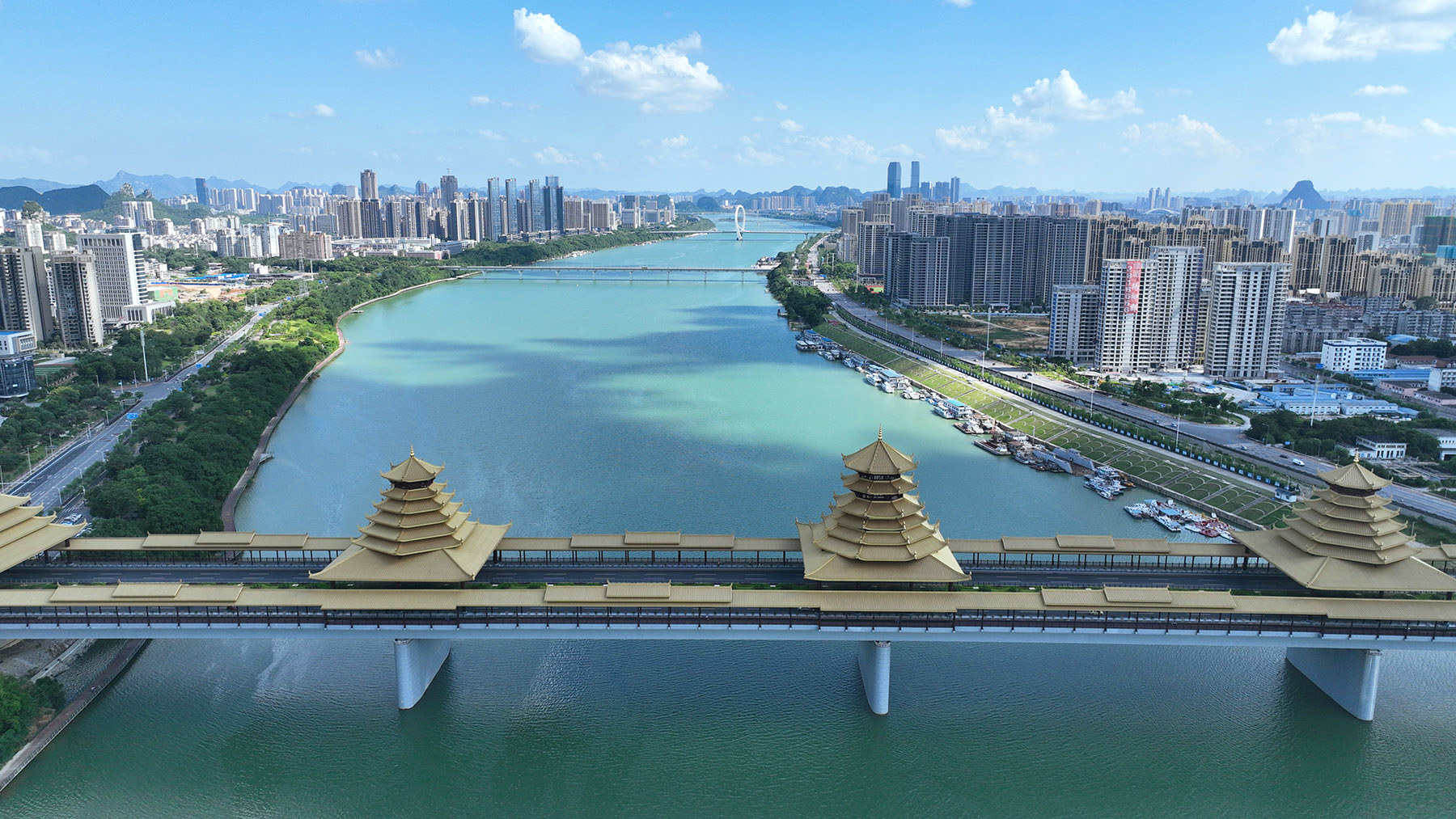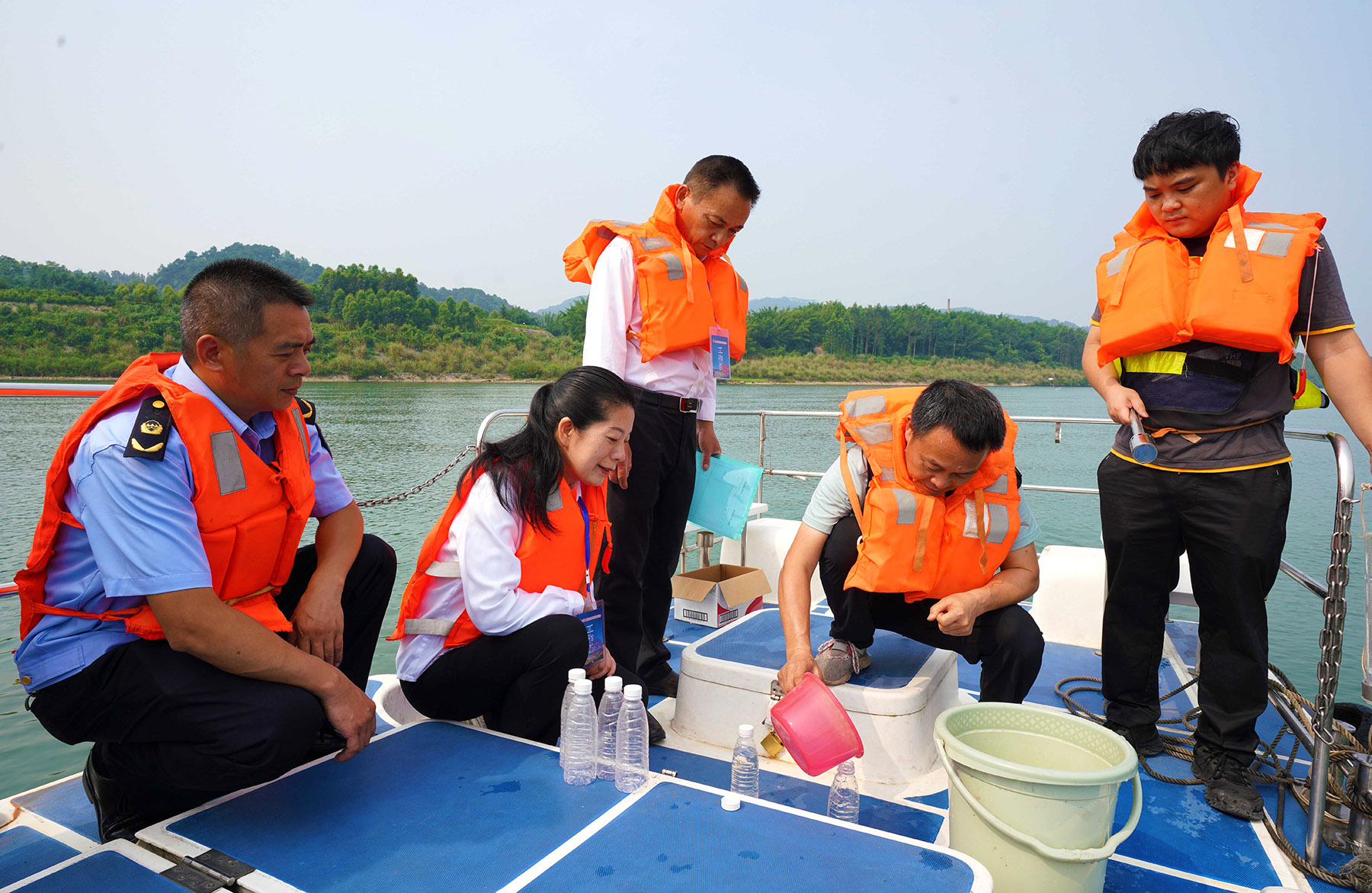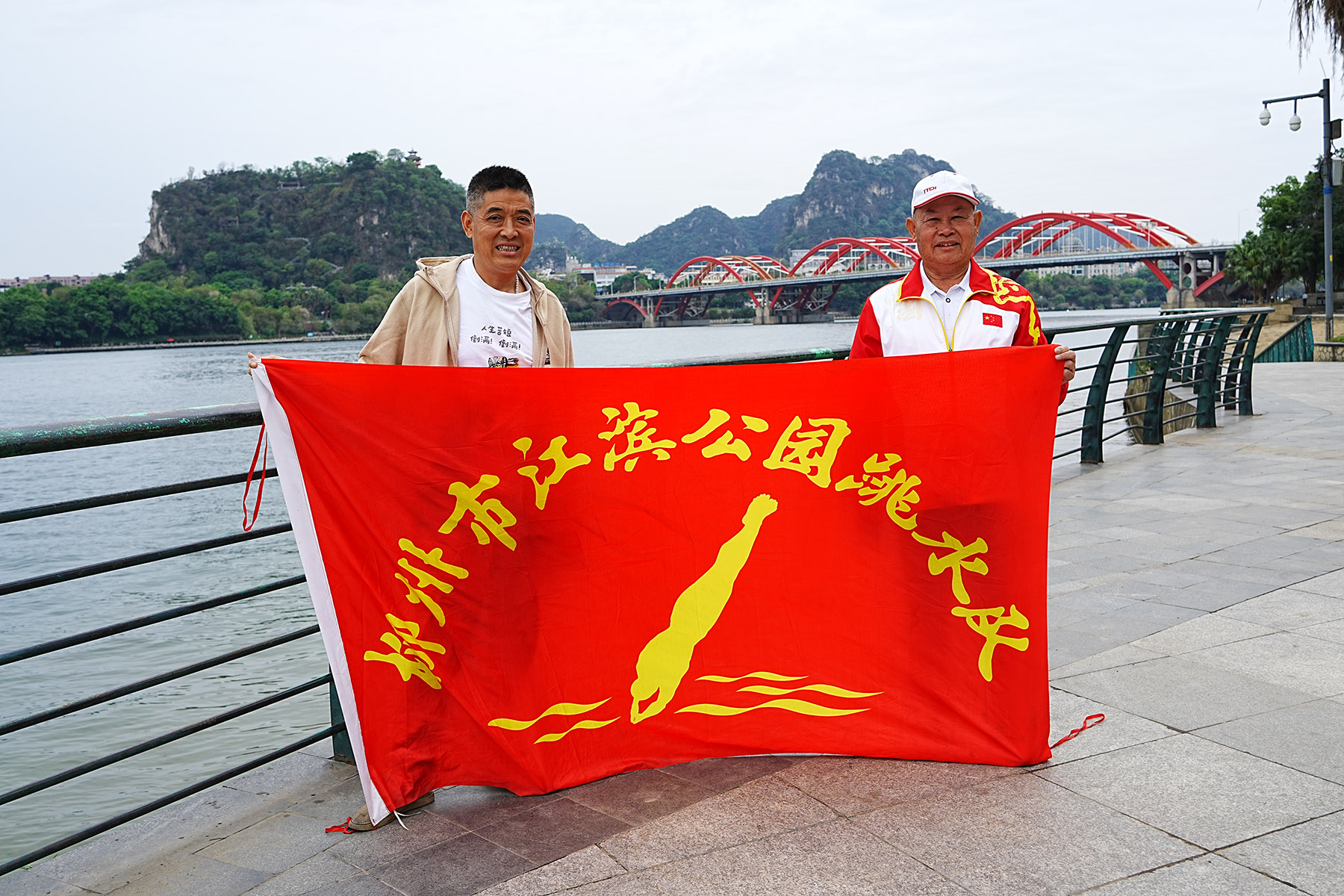City's efforts to stamp out industrial and household runoff yield environmental rewards

Editor's note: As protection of the planet's flora, fauna and resources becomes increasingly important, China Daily is publishing a series of stories to illustrate the country's commitment to safeguarding the natural world.
Liuzhou in South China's Guangxi Zhuang autonomous region has topped the national list for having the best water quality for the fifth year running, a milestone for a city that was once plagued by acid rain and polluted waterways.
Released earlier this year, the water quality assessment for 2024 ranked Liuzhou's waters as Class I and II in places, meaning that they were suitable as the habitats of rare aquatic species, spawning grounds for fish and shrimp, feeding grounds for juvenile fish, and even as sources for drinking water.
The picture wasn't always so rosy for Liuzhou, however, with the city for many years being a key regional industrial base, benefiting from economic development but suffering from dire pollution.
READ MORE: Industrial city in Guangxi ranks top in water quality after long cleanup
With over 3,000 enterprises in steel, auto manufacturing and machinery, industrial runoff would often end up in the city's waters.
Two decades back, faced with deteriorating water quality and environmental devastation, the Liuzhou government made the decision to redirect the development path of its traditional industrial base.
"Liuzhou was an industrial city, and there were numerous industrial wastewater outlets along the Liujiang River, which left the water very polluted," said Tang Jianhua, a 70-year-old who now regularly swims in the Liujiang.
"The water quality improved about 10 years ago, and I've been diving in the river for the past 13 years," he added.
Liuzhou has ranked first among cities above the prefecture level in surface water assessment across the country since 2020.
Wei Songning, deputy director of the water ecological environment division of the Liuzhou ecology and environment bureau, said the pollutants primarily came from industrial and domestic wastewater, and that all sources of wastewater along the riverbanks have been eliminated.
The Liujiang River, the largest river in the city of 4 million people, winds through densely populated residential areas. Some two decades ago, Liuzhou discharged its household wastewater directly into the river without treatment.
To control the discharge of contaminated water into the river, the local government has intercepted all the sewage pipes along its banks. As of last year, all domestic wastewater outlets along the river were eliminated, according to Zhou Wenyu, director of the urban utility management division of the city's housing and urban-rural development bureau.
The river's largest tributary, Zhu'e Creek, was also once a source of pollution into the Liujiang River.
"Many houses were built along the tributary and directly discharged domestic wastewater into the river, making the water filthy and smelly," Zhou said. "From 2005, we spent about 10 years working with the wastewater management company to bring this pollution source under control."
Measures included intercepting sewage pipes and diverting wastewater to treatment plants on the riverbanks, according to Zhou.

Liuzhou's main urban area now has approximately 2,200 kilometers of underground drainage pipelines, covering major residential communities and commercial districts.
"All domestic water is collected through these pipelines and directed to our wastewater treatment plants," Zhou said. He stressed that the Liujiang River's only water input is natural rainwater.
Two decades ago, the city's daily wastewater treatment capacity stood at just 100,000 cubic meters. From 2005 to 2018, with the help of $250 million in financial support from the World Bank, several wastewater treatment plants were constructed and a comprehensive wastewater management network was gradually developed. As a result, Liuzhou's wastewater treatment rate increased from 15 to 75 percent.
Last year, Liuzhou's wastewater treatment plants had a daily treatment capacity of 914,000 cubic meters and processed a total of 283 million cubic meters. The treatment rate was 99.05 percent, and the centralized treatment rate was 92.01 percent, the city government said.
According to the government's work plan for urban domestic sewage, by the end of this year, the daily domestic wastewater treatment capacity will reach over 940,000 cubic meters in Liuzhou, and the centralized wastewater collection rate will increase to over 95 percent.
To maintain water quality, Liuzhou has also established a comprehensive monitoring network, including a central control center, 10 automatic surface water quality monitoring stations, 10 automatic micro-monitoring points, and a specialized emergency response vehicle for water quality incidents. The city has also introduced the region's first intelligent management system for enterprise wastewater discharge and an online monitoring system for enterprise pollution sources.
Once lined with factories, the Liujiang River is now lined by lush trees and greenery along its banks.
Pointing at a mountain across the river, Wei, from the environment bureau, said there used to be a dyeing factory whose wastewater polluted the river. "We shut it down to prevent its dyeing materials from contaminating the water," he said.
In the past two decades, Liuzhou has reformed its industrial layout to protect its water resources. Industrial enterprises have been relocated from the urban area to designated industrial parks in the suburbs, while those with outdated production capacity and heavy pollution have been shut down.

For example, an industrial park dedicated to electroplating was established in Luzhai county in Liuzhou, bringing together electroplating enterprises. As a key component of Liuzhou's industrial chain, the electroplating sector plays a crucial role in producing hardware for the automotive industry.
"With enterprises now clustered in industrial parks across the city, centralized management ensures that pollutant discharge standards are consistently met," Wei said.
In recent years, enterprises have also voluntarily raised their standards for wastewater discharge.
State-owned enterprise Liuzhou Steel is located in the northern suburbs of Liuzhou. Situated upstream of the Liujiang River, the plant's wastewater discharge matters greatly for the river's overall water quality. The company has stepped up efforts in environmental protection in recent years.
Huang Junjie, who is in charge of the company's power plant, said three wastewater treatment stations have been built capable of fully intercepting, treating and reusing all industrial wastewater within its industrial park, achieving zero discharge of industrial wastewater.
"The main discharge pipe intercepts wastewater from factories and directs it to the treatment plants, where it undergoes several purification processes," Huang said.
"Once purified, the clean water is then distributed back to the factories for cooling and other industrial processes via the network of pipelines within the park," he added.
The company's wastewater treatment stations have a total designed capacity of 332,000 cubic meters per day, said Huang, who added that the utilization and circulation rate of industrial water throughout the entire park has reached over 98 percent. Meanwhile, the company's freshwater consumption per metric ton of steel decreased from 54 tons in 2000 to 1.23 tons last year, which is 47 percent lower than the industry average, according to the company.
However, the cost of circulating water within the industrial park remains relatively high. "The estimated cost of circulating water is over 7 yuan ($1.15) per ton, which is higher than directly using the water from the Liujiang River," said Huang. "However, even though green practices bring a burden for the company, it is our responsibility to do that."
With Liuzhou coming top of the national surface water quality test, people here take pride in the achievement, with an increasing number taking part in river protection. The city has 52,000 river guardian volunteers, who play a crucial role in protecting its waterways.
Tang, the 70-year-old diving enthusiast, joined the volunteer team last summer. Volunteers like Tang report to relevant authorities through both in-person and online channels if they find pollutants or illegal activities along the river.
Xie Xiaolin, deputy director of the Liujiang River ecological environment protection center, said efforts are coordinated among departments, including ecology, water resources, agriculture, forestry and urban construction. The Liuzhou government has also established a committee in charge of ecological environment protection along the Liujiang River. Although the city has led the water quality rankings for five consecutive years, environmental protection remains an ongoing effort, he said.
ALSO READ: Conservation protects fish stocks in Guangxi
"Liuzhou experiences frequent rainfall, and the city's combined drainage system, which handles both rainwater and wastewater, covers about 70 percent of the area, posing an ongoing challenge," said Zhou. "When heavy rains exceed the pipeline capacity, it can lead to the overflow of both wastewater and rainwater."
To address this issue, Zhou said the city is planning to expand the capacity of its drainage network. In the meantime, a comprehensive survey of the underground drainage system has been underway since 2022. This effort has helped identify incorrect connections where sewage has been mistakenly linked to rainwater pipes, and corrective measures are being implemented.
"Our wastewater treatment capacity must always stay ahead of the generation capacity. Only in this way, from an infrastructure standpoint, there will be no overflow of wastewater caused by insufficient treatment capacity," said Zhou.
Su Qiulan contributed to this story.
Contact the writers at lishangyi@chinadaily.com.cn


